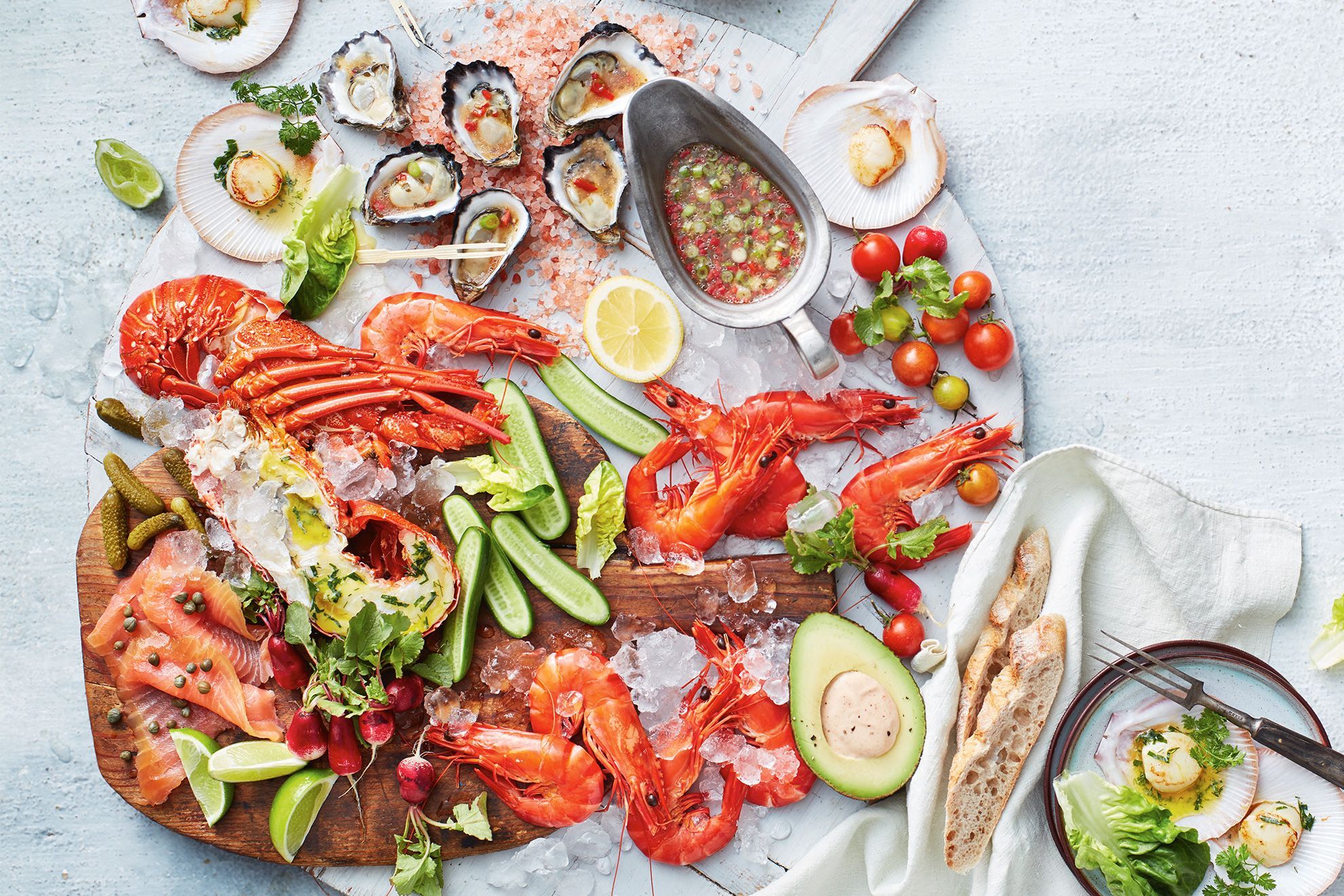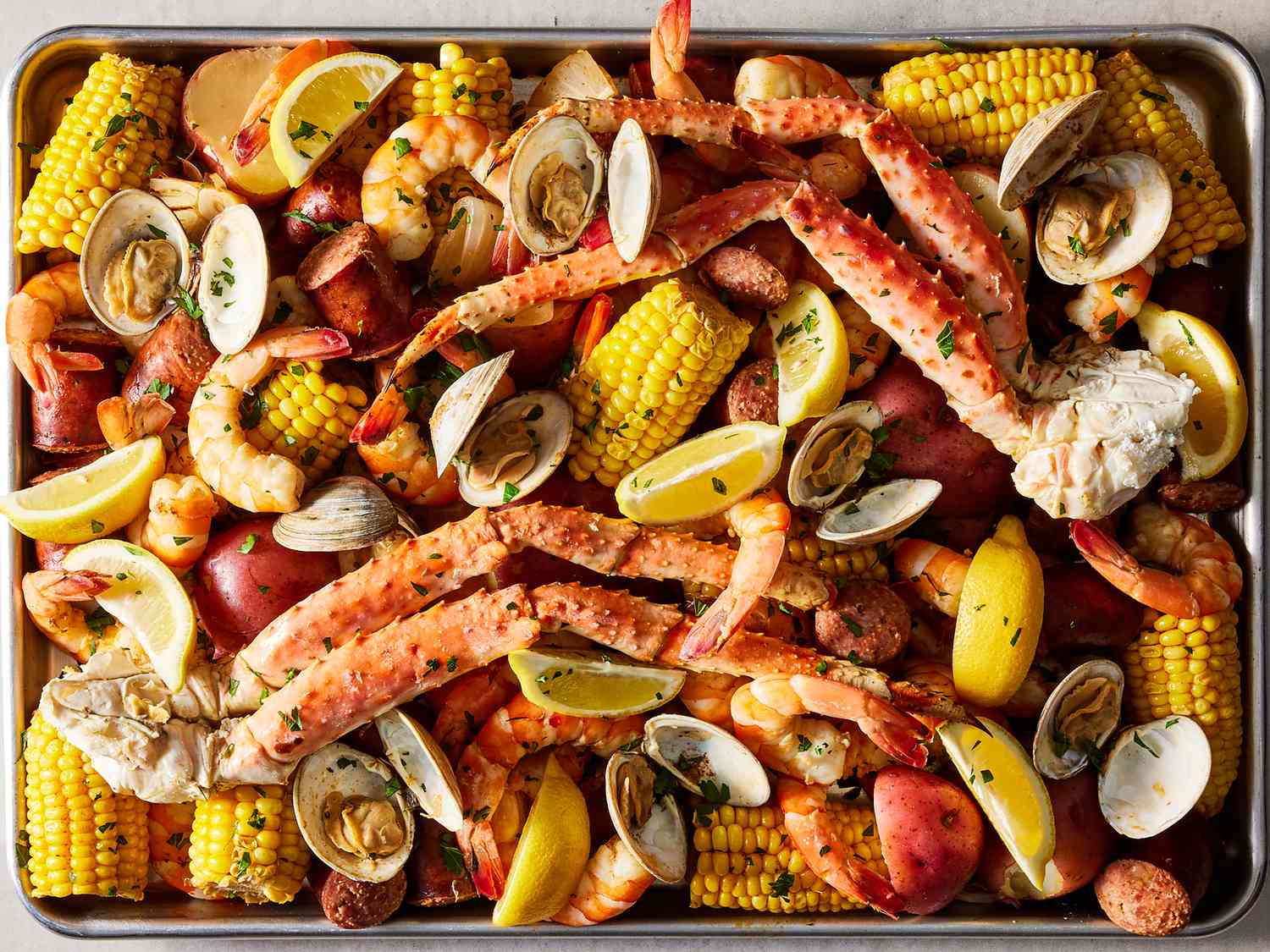From the icy depths of the Arctic to the sun-drenched coral reefs of the tropics, the world’s oceans, rivers, and lakes offer an astonishingly diverse and delectable bounty: seafood. More than mere sustenance, seafood represents a profound connection to our planet’s aquatic ecosystems, a cornerstone of countless cultures, and a culinary canvas of unparalleled flavour, texture, and nutritional richness. Exploring this vast underwater larder reveals a story of human ingenuity, ecological challenges, and pure gastronomic delight.
The sheer diversity of seafood is staggering. It encompasses finfish (demersal like cod and haddock, pelagic like tuna and mackerel), crustaceans (lobster, crab, shrimp, prawns), mollusks (bivalves like oysters, mussels, and clams; cephalopods like squid, octopus, and cuttlefish; gastropods like whelks and abalone), and other treasures like echinoderms (sea urchins) and seaweeds. Each category, and indeed each species within it, presents unique characteristics. Consider the delicate, flaky sweetness of perfectly steamed halibut, the rich, unctuous texture of a fatty piece of wild salmon, the briny explosion of a freshly shucked oyster, the satisfying crack of a lobster claw yielding its sweet meat, or the tender, slightly chewy bite of grilled octopus tentacles. This incredible variety provides endless possibilities for culinary exploration.
Nutritionally, seafood is often hailed as a nutritional powerhouse. It is the primary natural source of long-chain omega-3 fatty acids, particularly EPA and DHA, which are crucial for brain health, reducing inflammation, and supporting cardiovascular function. Fish and shellfish are also excellent sources of high-quality, easily digestible protein, packed with essential amino acids. Furthermore, they are rich in vitamins and minerals often harder to obtain elsewhere: Vitamin D (especially in fatty fish), Vitamin B12, iodine (vital for thyroid function), selenium (a potent antioxidant), zinc, and iron (particularly in shellfish like clams and mussels). Incorporating a variety of seafood into the diet is a cornerstone of many healthy eating patterns, from the Mediterranean diet to traditional Japanese cuisine.
The cultural significance of seafood is deeply woven into the fabric of human history and geography. Coastal communities worldwide have developed their identities and economies around the harvest and preparation of local marine resources. Think of the intricate sushi and sashimi traditions of Japan, where the freshness and quality of fish are paramount, elevated to an art form. Consider the vibrant fish markets of Southeast Asia, bustling hubs of commerce and culinary inspiration, or the classic fish and chips culture of Britain, a comfort food born from necessity. In the Mediterranean, grilled whole fish drizzled with olive oil and lemon embodies simplicity and sunshine. In Scandinavia, preservation techniques like smoking, salting, and pickling (gravlax, pickled herring) emerged to cope with long winters and ensure year-round sustenance. Cajun boils in Louisiana, Portuguese bacalhau (salted cod) dishes, and Peruvian ceviche all tell stories of place, history, and resourcefulness. Seafood is not just food; it’s heritage, celebration, and community.
However, the story of seafood is inextricably linked to sustainability and environmental challenges. The immense popularity and global demand for seafood have placed unprecedented pressure on marine ecosystems. Decades of industrial-scale fishing have led to the alarming overfishing of many iconic species like Atlantic cod, bluefin tuna, and Chilean sea bass. Destructive fishing practices, such as bottom trawling, can devastate seafloor habitats like coral reefs and sponge gardens. Bycatch – the accidental capture of non-target species like dolphins, sea turtles, seabirds, and juvenile fish – remains a significant ecological and ethical problem. Pollution, from plastic waste choking marine life to chemical runoff causing harmful algal blooms, further degrades the health of our oceans and the safety of seafood.
Addressing these challenges requires a multi-faceted approach. Sustainable seafood practices are no longer optional; they are imperative. This includes:
- Science-Based Quotas: Implementing and enforcing fishing limits based on robust scientific assessments of fish populations.
- Selective Fishing Gear: Using methods that minimize bycatch and habitat damage (e.g., pole-and-line caught tuna, trap-caught crab).
- Marine Protected Areas (MPAs): Establishing sanctuaries where fish can breed and ecosystems can recover.
- Responsible Aquaculture: Developing fish and shellfish farming practices that minimize environmental impact (reducing pollution, preventing escapes, sourcing sustainable feed) and provide a crucial alternative to wild-caught stocks. Innovations in land-based recirculating systems (RAS) and sustainable feed sources (like algae) offer promise.
- Consumer Awareness: Empowering consumers through credible seafood guides (e.g., Marine Stewardship Council – MSC, Aquaculture Stewardship Council – ASC certifications) to make informed choices that support sustainable fisheries and farms.
The culinary artistry surrounding seafood is a testament to human creativity. Its versatility is unmatched. It can be enjoyed raw (sashimi, ceviche, oysters), cured (smoked salmon, gravlax), marinated (escabeche), steamed (mussels, fish), poached (salmon), grilled (whole fish, prawns), baked (stuffed fillets), fried (fish and chips, calamari), roasted (lobster), or stewed (bouillabaisse, cioppino). It forms the base of rich stocks and bisques, stars in salads and sandwiches, and pairs beautifully with an incredible range of flavours – from the sharpness of citrus and vinegar to the richness of butter and cream, the heat of chilies, the earthiness of mushrooms, the sweetness of tomatoes, and the fragrance of fresh herbs like dill, fennel, and cilantro. Mastering the cooking of seafood often hinges on understanding its delicate nature – respecting cooking times to preserve moisture and tenderness is key.
Looking towards the future of seafood, innovation and responsibility must go hand-in-hand. Advances in aquaculture technology, exploration of underutilized species (like sardines or mackerel, often more abundant and sustainable), and continued efforts towards sustainable wild fisheries management offer hope. The rise of plant-based and cell-cultured seafood alternatives also presents intriguing possibilities, though their long-term ecological and nutritional profiles are still evolving. Consumers increasingly demand transparency about the origin and sustainability of their seafood, driving positive change in the industry.
In conclusion, seafood is far more than a protein source; it is a complex, captivating, and essential part of the human experience. It tantalizes our taste buds with an unparalleled spectrum of flavours and textures, nourishes our bodies with vital nutrients, and connects us to diverse cultures and the vast, mysterious oceans that cover our planet. Yet, this bounty is finite and vulnerable. Embracing sustainable practices – from responsible fishing and farming to informed consumer choices – is not just about preserving delicious meals; it’s about safeguarding the health of our oceans, ensuring the livelihoods of coastal communities, and guaranteeing that future generations can continue to marvel at and savour the extraordinary gifts of the sea. The journey through the world of seafood is one of profound appreciation, demanding both celebration and conscientious stewardship.

